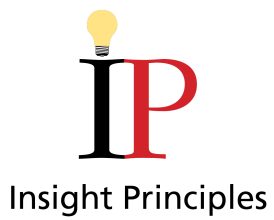by pressablealiassolutionscom
Share
Issue #78, February 2020
Welcome to Insights and Implications!
Can you imagine a workplace without PowerPoint? We can. While an interesting tool, the way PowerPoint is often used stifles the creative process that helps us solve our most vexing problems. Read on to learn more.
All of us at Insight Principles
Everybody Hates PowerPoint
An article in Inc. Magazine caught my attention titled, It’s 2020. Why Are You Still Using PowerPoint? Read the article here.
At Insight Principles, we hardly ever use PowerPoint. Simultaneously showing a bunch of words and diagrams on a screen while we are speaking to a group makes little sense. If we want a group’s attention, why would we display competition for that attention while we’re talking?
Still, PowerPoint is ubiquitous. Countless hours are spent preparing presentations. Still more are spent watching them. I’ve attended meetings where the speaker showed slides of complex charts, detailed diagrams, and single-spaced paragraphs, all while speaking with a running commentary. There are few opportunities for connection built into most slide decks. Not all PowerPoint presentations are bad, but research shows that even the good ones are fairly ineffective.
A 2008 study from Purdue University found that students retained 15% less information when the lecturer delivered information using PowerPoint. Other studies showed that all the time and effort put into preparing a PowerPoint presentation did not lead to any improvement in information retention. The research indicates that PowerPoint use is a waste of time at best. At worst? Counterproductive.
Because effective communication has two parts – the speaker and the listener, these research outcomes are not surprising. PowerPoint does not help either party.
A good friend of mine often says, “People listen worse than they sing.” How many good singers do you know? In our programs, we do an experiment asking participants to watch what happens in their minds while they are listening to another person tell a story. Most people report a lot happening inside their minds. To many, it’s like having several pop-up screens open on the computer. PowerPoint slides add more screens to your already busy mind. How much of what the presenter is saying do you actually hear?
An even bigger downside is the loss of reflective dialogue and open conversation. General James Mattis, the former Secretary of Defense famously said, “PowerPoint makes us stupid.” When you require audiences to sit passively and take in lots of information without comment or clarification, they go to sleep mentally (sometimes physically as well).
Let’s say we all give up PowerPoint. Now what?
When it’s your turn to do a presentation take time to reflect on what is important. Simplify your message. What are you trying to accomplish in the meeting? What would be a miracle outcome? One suggestion is to prepare a concise summary of the facts/information, hand it out and let people read it at the beginning of the meeting so you all get on the same page.
Then let people be free to wonder. Wondering is an amazing gateway to the unknown. If PowerPoint straight-jackets your mind, wondering unleashes it. You don’t have to have the answer or be an expert to wonder. All it takes is curiosity.
Regardless of the purpose of your meeting, there is a creative process built in to the human mind to help you. And you can optimize it. Sharing data is often necessary but the answers to complex problems won’t be found in what you already know.
For example, we once worked with a leadership team tasked with the difficult job of finding a way to increase their yearly earnings by 100 million dollars. An attorney without a full understanding of the company’s manufacturing processes but willing to wonder, asked a few “dumb questions”. At first his questions were off the mark, but then a reflective dialogue ensued. Previously unimagined ideas were birthed. The unknown had been tapped.
Imagine what it would be like if your meetings were places of deep listening, quiet reflection, innovative thinking, collaborative planning, and no PowerPoint. This is not a pipedream.
The innate resources of your mind will help you.
Sandy Krot
